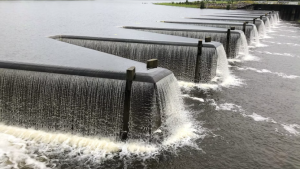Every year, Australian homes waste a significant amount of water. This situation is quite alarming as water is one of the most precious resources on Earth. Water conservation helps alleviate the need for dam construction, reduces the release of wastewater, as well as minimising greenhouse gas emissions. But, the critical question is: how do we reduce water consumption? Below is the guide on how to save water at home.
Showers
With a faulty showerhead, we tend to use about 15-25 litres of water within 60 seconds. On the contrary, using a star rated showerhead helps reduce excessive water use to about 6-7 litres per minute. By using an energy-saving showerhead, you will help save water, as well as save on energy and water bills.
Check your showerhead label to see its star rating. The rating gives information about the rate of water flow. Depending on your preferred model, some designs come with extra options such as self-cleaning and massage features. The best thing, changing a shower head can be done in a few easy steps.
Toilets
How you flush a toilet plays a crucial role in the amount of water used. When appropriate, you should use a half-flush button to save water. Alternatively, if you have just one flush toilet in your home, you can call your plumber to reset the flush volume. Also, endeavour to fix a leaky toilet. By fixing even a small leak, you will be saving thousands of litres of water annually. To know whether your toilet is leaking or not, place a few drops of food colouring in the system without flushing. Within 15 minutes, if you notice the colour inside the bowl, then there is a leak somewhere. Call a plumber to fix your leaking toilet and start saving water instantly.
Just like a shower head, you can help save a significant amount of water by replacing the toilet with a higher star rated model.
Taps
If you have a leak dripping at the rate of one drop per second, then you are likely to waste about 12,000 litres of water per year. But, with some easy procedures, you can save your taps from using an excessive amount of water. Try fixing any leaks by changing tap washers, or cartridges for modern types of taps. Don’t forget to check your outside taps for leaks as well.
Washing Machines
To increase the efficient use of water during your laundry, then try to wash at full loads, reset the water level of your machines, and use the economy cycle if available. You can save more energy with cold wash too. A water-efficient washing machine with a high rating may have a higher cost but will save in the long run. Such a machine help conserve about 50 litres of water with every load of laundry as well as reduces the use of detergent.
Dishwashers
By using a dishwasher, you don’t have to rinse; consequently, you will be saving water. However, be sure to to load the dishwasher fully before use. As with other machines and fixtures, try to get a star rated dishwasher for your home. Economical dishwasher tends to reduce the use of water compared to the amount of water needed for traditional washing.
Outdoor water use
One of the outdoor areas where we tend to use water mostly in the garden. To help save water, try to water your garden early so to allow it to penetrate the plants. In this way, the plant will have sufficient water to use across the day. With less frequent soakings, the plant roots will learn to grow deeper into the soil and become more drought-tolerant. Always to water the roots and not the leaves – water evaporates from leaves quickly, which can result in scorching. Additional outdoor water saving tips are:
- Mulch garden beds to reduce evaporation and run-off when you water plants. Plant trees to form shade and reduce water evaporation.
- Alternative water source such as rainwater or greywater should be used in the garden where possible.
- Take your car to a carwash centre that supports water recycling.
- If you are fortunate to have an outdoor pool, a swimming pool cover is a welcome idea.
All these steps will help reduce evaporation and conserve up to 30,000 litres of water annually.
Check the WELS Product Rating System

Using the national Water Efficiency Labelling and Standards (WELS) program can help save water significantly in your home. The scheme provides information to consumers about the water efficiency of different products. The system uses a star rating method as products are labelled based on their water efficiency – more blue stars indicate higher water efficiency. Currently, WELS covers products such as washing machines, taps, toilets, showers, and dishwashers.
Aside from water efficiency label, the scheme gives information about water consumption figures, and the average water flow per 60 seconds for showers and taps. Some products also come with rebates; you can check with your water utility supplier or local council.
Together, we can save a massive amount of water annually and work towards a more sustainable future for generations to come. Do you have more water saving tips? Please share them in the comments!







